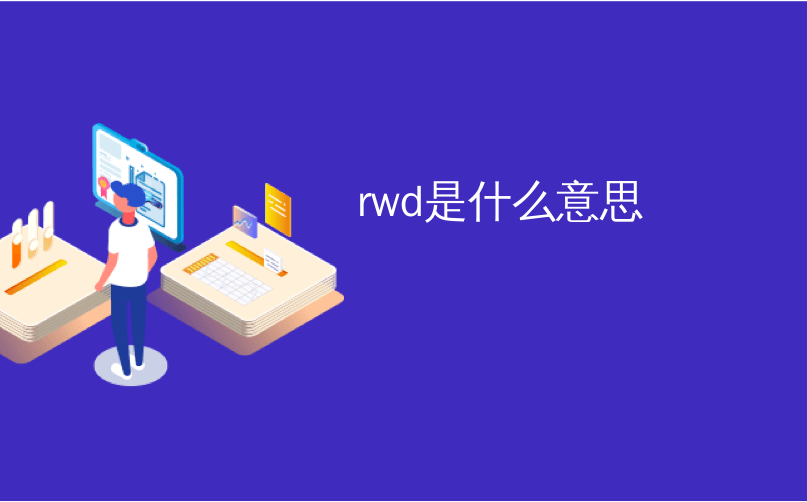
rwd是什么意思
This morning, Mark Boulton wondered aloud on Twitter about why responsive design “looks” like responsive design:
今天早上,马克·布尔顿(Mark Boulton) 在Twitter上大声地想知道为什么自适应设计“看起来”像自适应设计:
I wonder if #RWD looks the way it does because so many projects aren’t being run by designers, but by front-end dev teams.
我想知道#RWD是否看起来像它那样,因为这么多的项目不是由设计师而是由前端开发团队来运行的。
This certainly isn’t the first time that someone has suggested that responsive sites have a “look” to them. In fact, it seems that particular topic has been quite popular over the last few years. And to be fair, a pretty large number of responsive sites do tend to share similar aesthetics.
当然,这并不是有人第一次建议响应式网站具有“外观”。 实际上,在过去几年中,特定主题似乎很受欢迎。 公平地说,相当多的响应站点确实倾向于分享相似的美感。
Before I dig into that, let me state my usual “blame the implementation, not the technique” just in case anyone was considering insinuating that responsive design dictates a specific sort of visual appearance. (To be clear: I don’t think that’s what Mark was doing at all—I’m just preemptively dismissing that line of commentary because it’s almost certainly going to come up.)
在深入探讨之前,让我先说一下我通常的“归咎于实现,而不是技术” ,以防万一有人考虑暗示响应式设计指示特定的视觉外观。 (要明确:我完全不认为这是Mark所做的,我只是抢先驳回了那条评论,因为几乎可以肯定会发表这一评论。)
There are a few reasons why I think we’re seeing this commonality at the moment.
我认为目前有这种共性有几个原因。
网络可能很时髦 (The web can be trendy)
Let’s be honest with ourselves: we web folk can be a little trendy. We do this with specific technologies and tools, and we also do this with visual design. There has long been a tendency for people to mimic whatever the recent definition of “beautiful” online is (grunge, “web 2.0”, “flat design”, etc). Any glance through the once massively popular CSS/design galleries will attest to that.
让我们对自己说实话:我们网络人可能有点时髦。 我们使用特定的技术和工具来做到这一点,我们还使用视觉设计来做到这一点。 长期以来,人们倾向于模仿网上对“美丽”的最新定义(垃圾,“ web 2.0”,“平面设计”等)。 曾经广受欢迎CSS /设计画廊的任何浏览都将证明这一点。
我们仍然很舒服 (We’re still getting comfortable)
Responsive design is still relatively young. With all the articles and presentations about it, it’s easy to forget that. You don’t have to look far though to find companies that are just starting to dip their toes into it for the first or maybe the second time.
自适应设计还比较年轻。 关于它的所有文章和演示文稿,很容易忘记。 您不必花很多时间就可以找到第一次或第二次才开始涉足的公司。
Understandably, people will lean on established patterns (or frameworks like Foundation or Bootstrap) to provide a level of comfort as they’re working things out. Eventually as people get more comfortable with how to approach multi-device projects, their reliance on these patterns will lessen and they’ll start to experiment more.
可以理解,人们将依靠既定的模式(或诸如Foundation或Bootstrap之类的框架)在工作时提供一定程度的舒适感。 最终,随着人们对如何处理多设备项目更加满意,他们对这些模式的依赖将减少,并且他们将开始进行更多的实验。
筒仓和瀑布仍然是常态 (Silo’s and waterfalls are still the norm)
Kevin Tamura responded to Mark’s comment on Twitter suggesting our workflow may be to blame:
Kevin Tamura在Twitter上回应了Mark的评论, 暗示我们的工作流程可能是罪魁祸首 :
@markboulton @Malarkey I think it’s an over reliance on the waterfall methodology for projects.
@markboulton @Malarkey我认为这是对项目瀑布方法的过度依赖。
The more multi-device work you do, the more you discover that the toughest problems to be solved aren’t related to technology. The toughest problems are related to people, process, workflow and politics.
您所做的多设备工作越多,您就越会发现要解决的最棘手的问题与技术无关 。 最棘手的问题与人员,流程,工作流程和政治有关。
You can see this reflected both in projects led primarily by folks more comfortable with development (which may exhibit many of the traits that Mark was noticing) as well as projects led primarily by folks more comfortable with visual design (which may buck the trend a bit, but often at the cost of performance and reach).
您可以看到这既反映在主要由对开发更适应的人主导的项目中(可能表现出Mark注意到的许多特征),也主要在对视觉设计感到更适应的人主导的项目中(可能与趋势背道而驰) ,但通常会以提高性能和覆盖面为代价)。
Transitioning from the traditional waterfall/siloed approach to a fluid process where designers and developers are working more closely together can be a very difficult adjustment. Not only do you have to battle the internal politics involved in such a move, but you have to experiment to find the right comfort level. Until organizations make that transition it’s natural for things to be off-balance a little bit.
从传统的瀑布式/孤岛式方法过渡到流畅的过程,使设计师和开发人员更加紧密地合作,这可能是非常困难的调整。 您不仅必须与这种举动相关的内部政治作斗争,而且还必须尝试找到合适的舒适度。 在组织进行这种过渡之前,事情自然会失去一些平衡。
The good news is that the transition can be made—and a lot of folks are sharing how they’re handling it. Eventually those walls between roles will break down. When they do, that healthier process based on collaboration will lead to more creativity and experimentation in design and that’s when this stuff will get really fun.
好消息是可以进行过渡,而且很多人都在分享他们的处理方式。 最终,角色之间的隔离墙将崩溃。 当他们这样做时,基于协作的更健康的过程将带来更多的设计创造力和实验性,这时这些东西将变得非常有趣。
rwd是什么意思





















 5338
5338











 被折叠的 条评论
为什么被折叠?
被折叠的 条评论
为什么被折叠?








